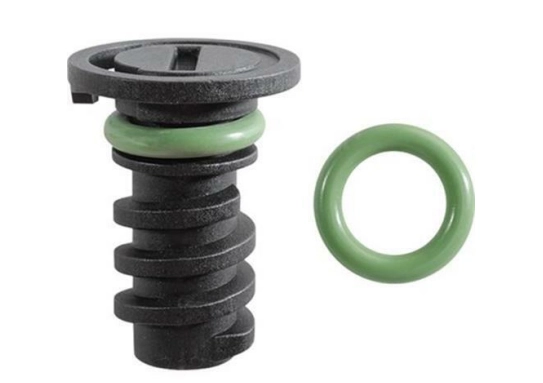Understanding Crankshaft Pulley Oil Seal Function and Importance in Engine Performance
Understanding the Crankshaft Pulley Oil Seal Importance and Maintenance
In the realm of automotive engineering, components such as the crankshaft pulley oil seal play a critical role in ensuring the efficient operation of an engine. The crankshaft, an essential part of any internal combustion engine, converts linear motion from the pistons into rotational motion, transmitting power to the vehicle's drivetrain. The crankshaft pulley, attached to the front of the crankshaft, serves as the anchor point for the serpentine belt, which drives various components like the alternator, air conditioning compressor, and power steering pump. Behind this setup lies a crucial component—the crankshaft pulley oil seal.
Functionality of the Crankshaft Pulley Oil Seal
The primary function of the crankshaft pulley oil seal is to prevent engine oil from leaking out of the engine while also preventing contaminants from entering the oil system. It acts as a barrier around the crankshaft, effectively sealing the gap between the crankshaft and the crankshaft pulley. This is vital because any oil leak can lead to a significant loss of oil, adversely affecting engine lubrication and leading to excessive wear and tear. Moreover, contamination can cause serious damage to engine components, potentially leading to costly repairs.
The oil seal is typically made from durable materials such as rubber or reinforced polymers. It is designed to withstand the high temperatures and pressures that exist within an operating engine, maintaining its integrity over time. The effectiveness of the oil seal can significantly influence the longevity and health of the engine.
Symptoms of a Failing Crankshaft Pulley Oil Seal
Over time, the crankshaft pulley oil seal can wear out or get damaged due to various factors such as exposure to heat, oil degradation, or simply the wear and tear associated with the age of the vehicle
. It is essential for vehicle owners to recognize the symptoms of a failing oil seal1. Oil Leaks The most telltale sign of a failing oil seal is visible oil leaks. If you notice oil spots underneath your vehicle, particularly near the front of the engine, it could signal a problem with the oil seal.
crankshaft pulley oil seal

2. Oil Pressure Warning Light If the oil seal fails, it can lead to a drop in oil pressure within the engine, triggering the oil pressure warning light on your dashboard.
3. Increased Engine Noise A leak from the oil seal can lead to inadequate lubrication of engine components, resulting in increased friction and noise.
4. Burning Smell If engine oil leaks onto hot components, such as the exhaust manifold, it can produce a burning smell, indicating a possible oil leak from the seal.
Maintenance and Replacement
Regular maintenance is key to prolonging the life of the crankshaft pulley oil seal. Keeping the engine oil at the appropriate level and changing it regularly can significantly reduce the wear on the seal. If you experience any of the symptoms mentioned above, it's crucial to take your vehicle to a professional mechanic for a thorough inspection.
Replacing a damaged crankshaft pulley oil seal is typically a labor-intensive process, as it often requires the removal of the crankshaft pulley and other related components. However, ensuring that the seal is functioning correctly is critical to the overall health of the engine.
In conclusion, the crankshaft pulley oil seal, though often overlooked, plays an indispensable role in the engine's operation. By understanding its function and recognizing the signs of wear, vehicle owners can maintain their engines more effectively, ensuring longevity and optimal performance. Regular check-ups and timely replacements when necessary can save both time and money in the long run.
-
Seal 12x20x5: Precision Radial Shaft Seals for Industrial Reliability
News Nov.24,2025
-
Seal 12x18x5: Essential Guide to Specifications, Applications & Vendors
News Nov.24,2025
-
Understanding Seal 12 20 5: Applications, Specifications & Industry Insights
News Nov.23,2025
-
Durable Oil Seal 85x110x12 – Reliable Sealing Solutions for Industry
News Nov.23,2025
-
Durable and Precise Oil Seal 75x95x10 for Efficient Machinery | YJM Seal
News Nov.22,2025
-
Durable Oil Seal 75x100x10 for Reliable Industrial Performance | YJM Seal
News Nov.22,2025
-
High-Quality Oil Seal 65x90x10 | Durable & Reliable Sealing Solutions
News Nov.22,2025
Products categories















